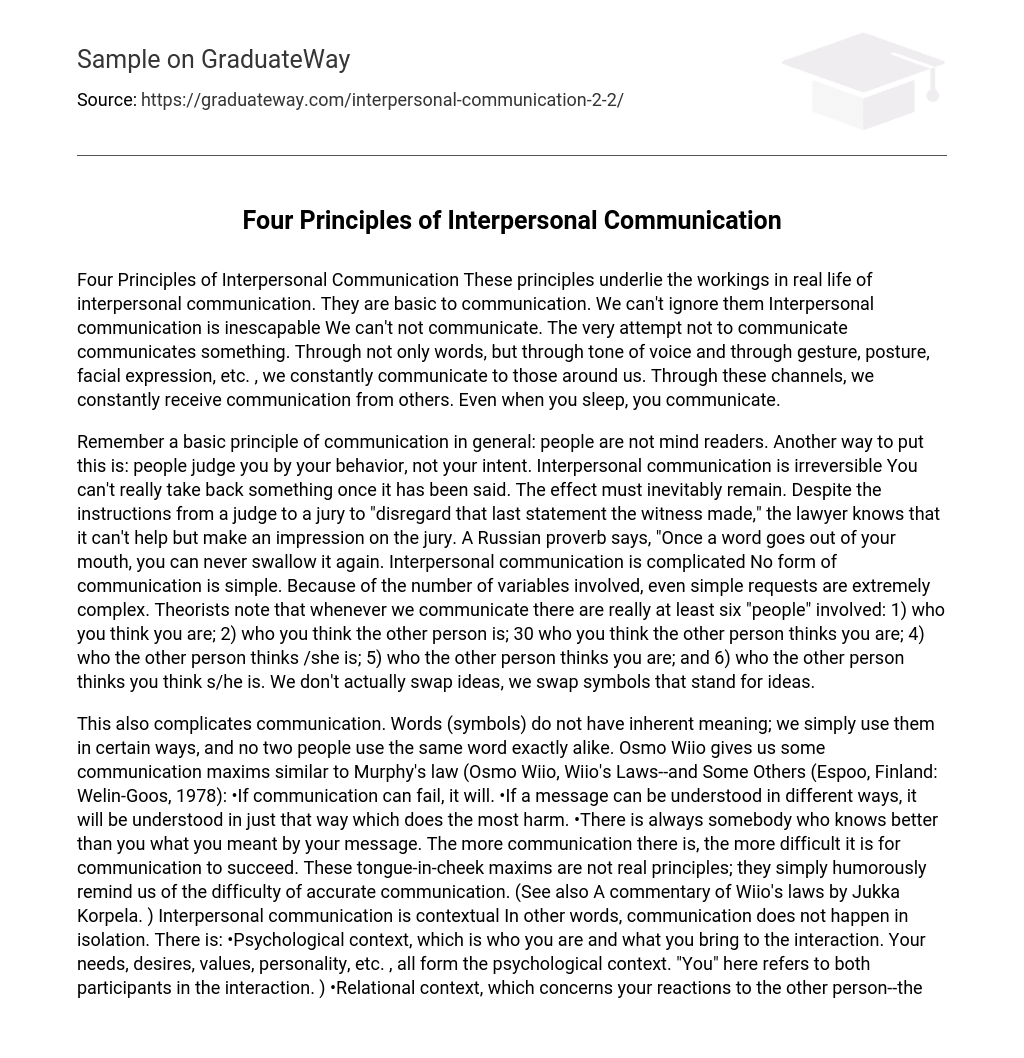These principles are crucial in interpersonal communication as they cannot be disregarded. Interpersonal communication is inevitable and trying to avoid it still sends a message. Our communication relies not only on words but also on our tone, gestures, posture, facial expressions, and more. Through these different channels, we constantly transmit messages to others while receiving communication from them simultaneously. Communication even occurs during sleep.
It is crucial to remember that people judge you based on your actions, not your intentions. It’s important to realize that interpersonal communication cannot be taken back once spoken and will have consequences. Even if a judge tells the jury to ignore a statement made by a witness, the lawyer understands that it will still influence the jury.
According to a Russian proverb, once a word is spoken, it cannot be retracted. Interpersonal communication can be intricate even for basic requests as it involves various factors. Theorists propose that the communication process includes at least six individuals.
- who you think you are;
- who you think the other person is;
- 30 who you think the other person thinks you are;
- who the other person thinks /she is;
- who the other person thinks you are;
- who the other person thinks you think s/he is.
Instead of exchanging ideas directly, we exchange symbols that represent those ideas.





